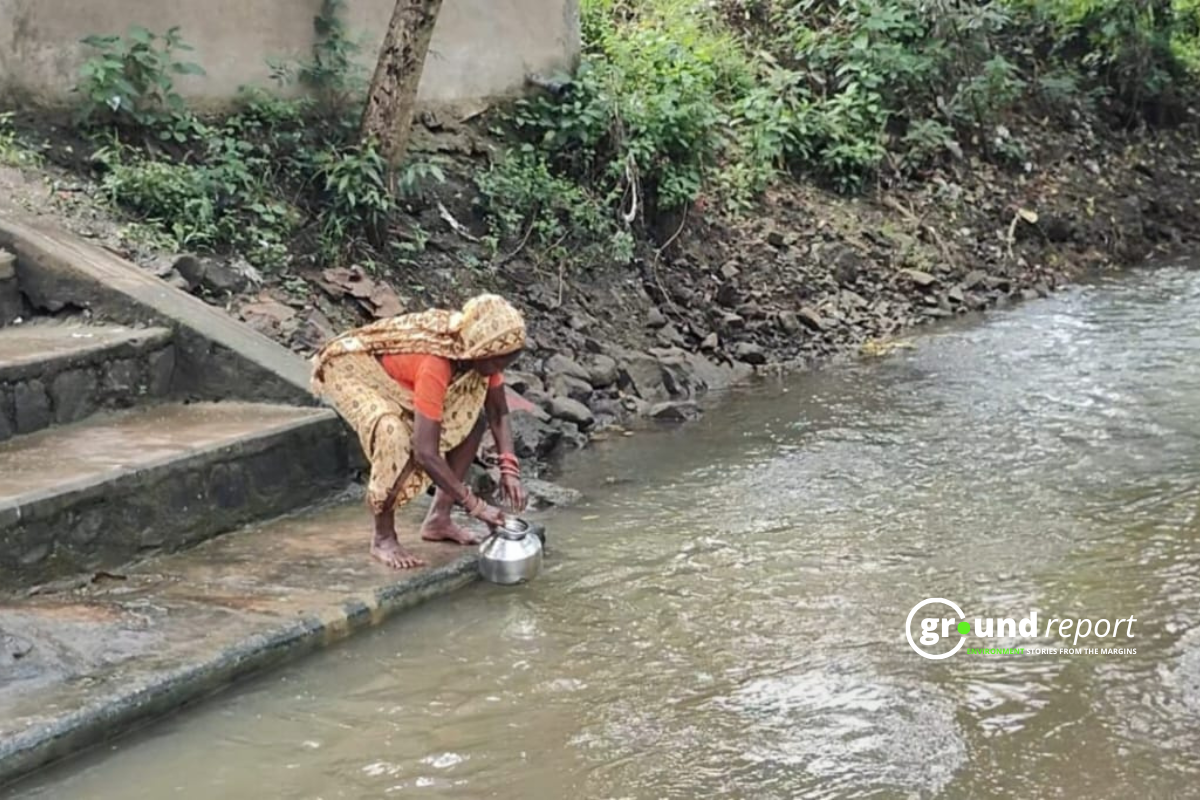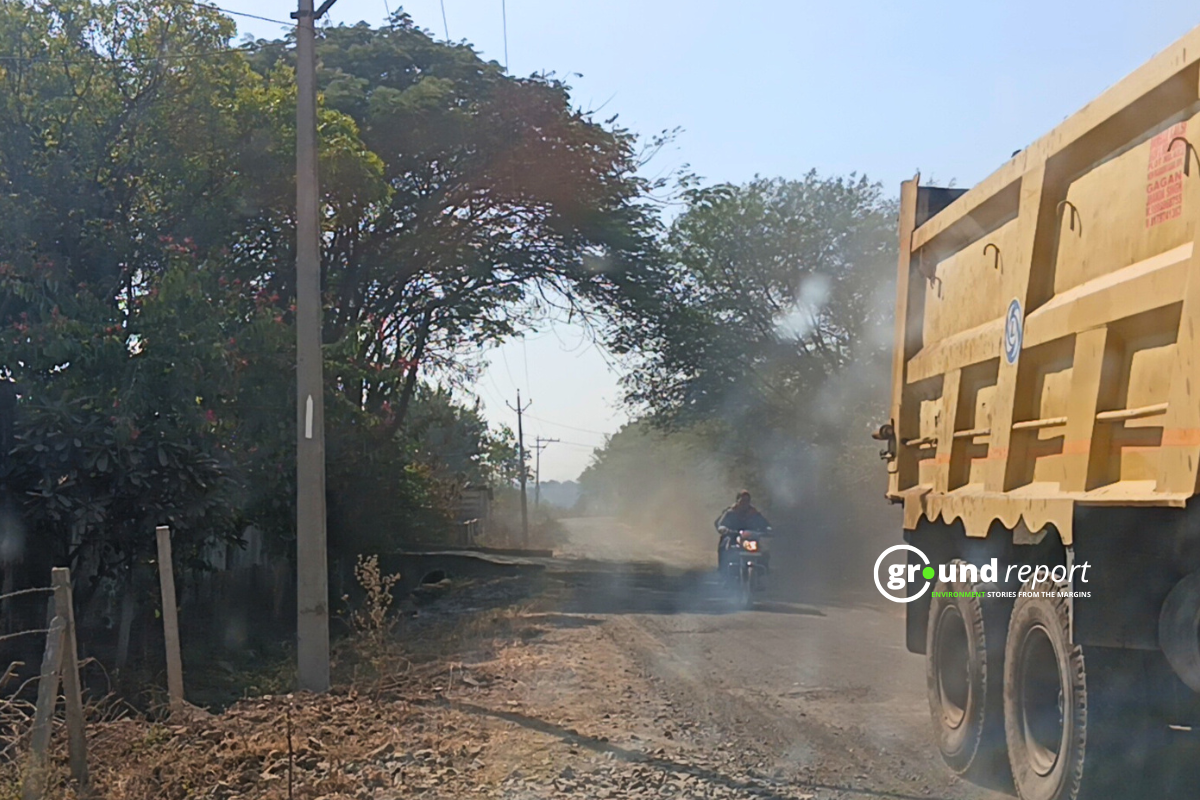Makhanlal, with his particular crooked smile, happily shares his enthusiasm towards nurturing the newly planted plants on the village’s cremation ground. He waters and maintains these plants here, and has been employed by the panchayat, under MNREGA. What makes Makhanlal’s work efficient is the recently built DEWATS– Decentralized Wastewater Treatment Systems. As a ‘paudha rakshak (plant protector), he says,
“When the DEWATS were not built, we had to get water from a significant distance. But, now that water is available here.. it is convenient,” he says.
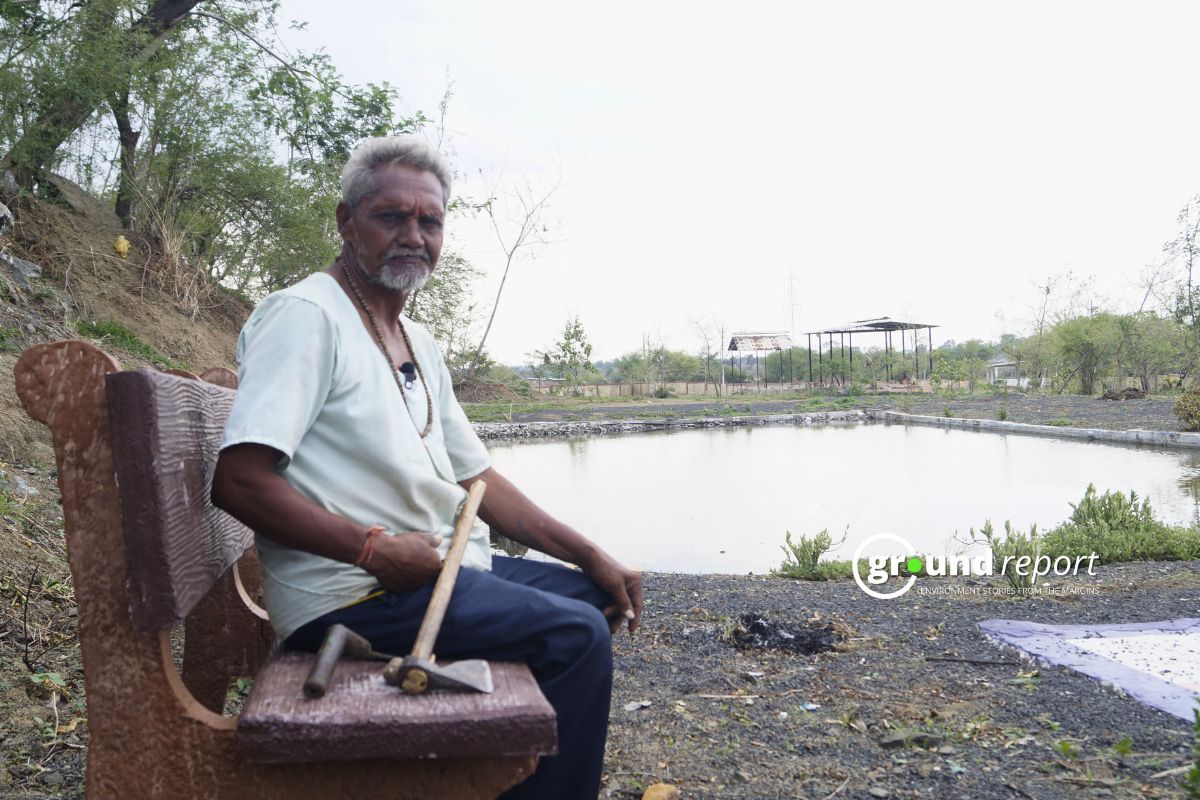
The Khadi gram panchayat is utilizing the village’s natural slope to direct greywater from almost 60% of homes to the DEWATS. DEWATS are a power-free water treatment solution that draws water from a height and passes through chambers of different heights. Any impurities in the water settle down in the chamber and clean water passes into the next chamber. Finally, you get treated water that can be used for watering plants and outdoor activities.
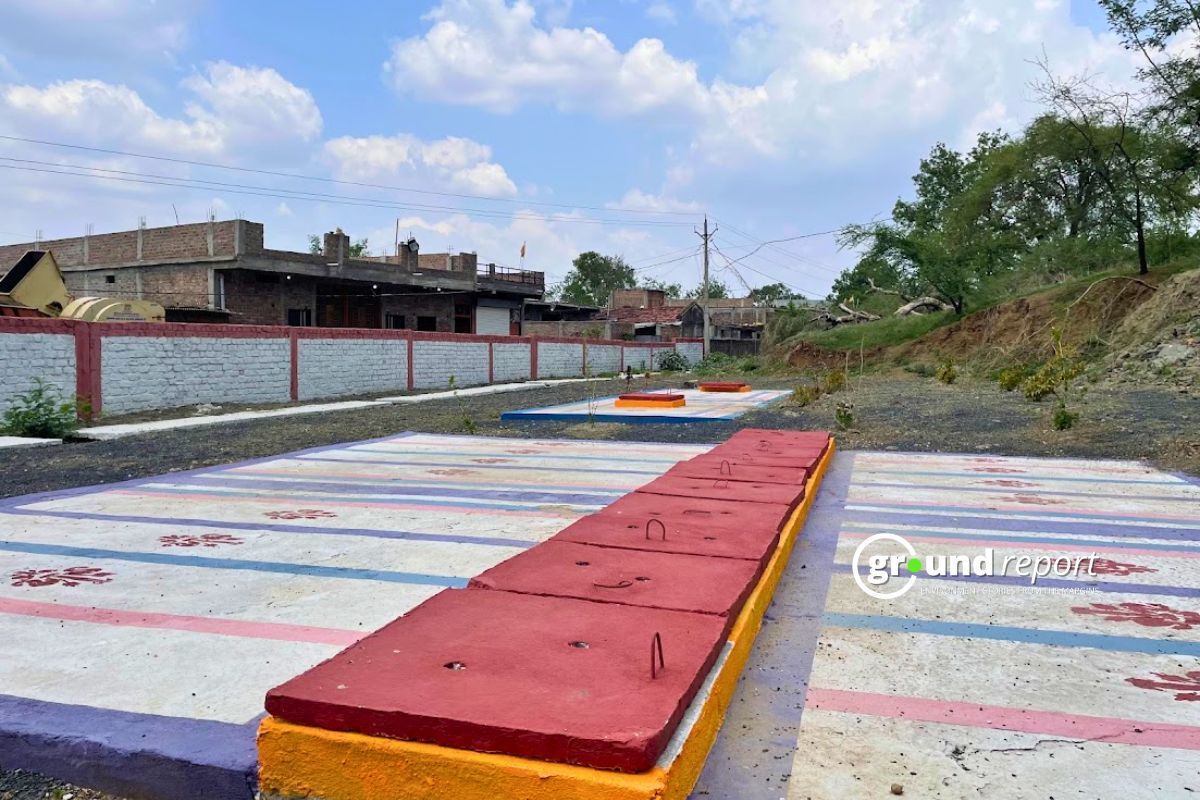
We’re greeted by monkeys hanging to these plants in the crematorium ground.
“We have made this crematorium so comfortable, and lush by planting trees that everyone wants to come here… even before they die,” one villager jokes.
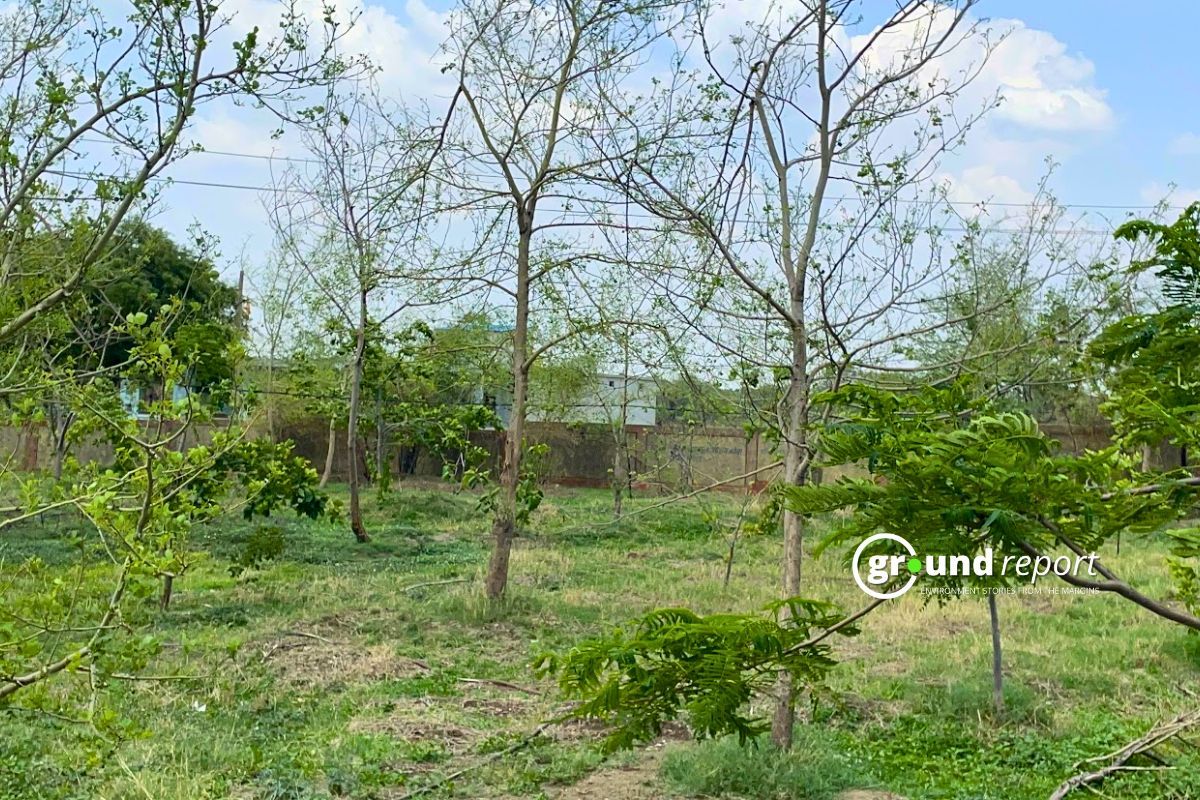
Early this year, the DEWATS at Khadi Haat was constructed, with a budget of Rs 8.75 lakh, under Swachh Bharat Mission and MNREGA. And, this system has become a talking point among local authorities, and gram panchayats. Furthermore, most of the streets have underground PVC-piped drains. One side of the village homes’ daily greywater is directed to DEWATS, while the other is directed to the recharge pit. As mentioned, the filtered greywater in the DEWATS is used to water the 500 plants planted in the ground.
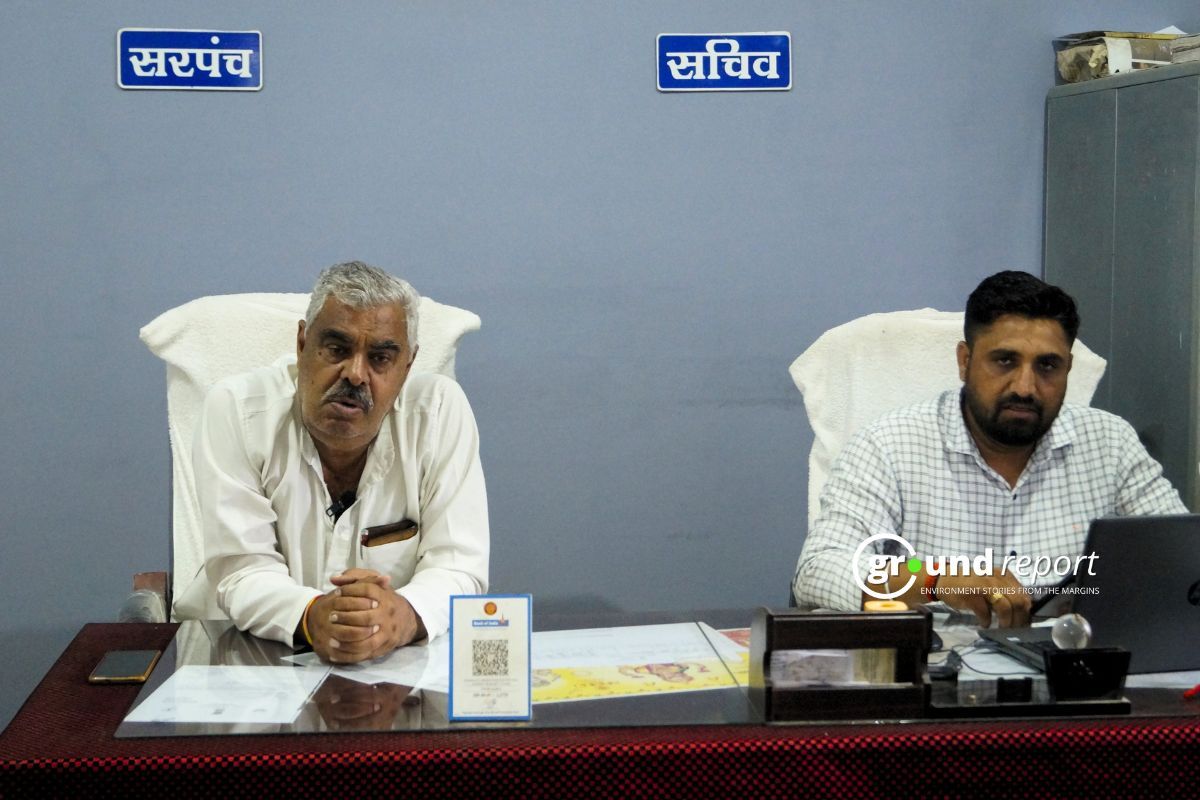
The clean roads, covered drains, waste management, tap water in (almost) every house and conservation of natural resources have become the identity of Khadi Haat village in Ashta tehsil of Sehore district. The jugalbandi– work tandem – of the Sarpanch Manohar Patel, Secretary Ashish Verma and villagers has made this village exemplary.
Water
There are two ponds in the village. One is on the right side as one enters the village. In this pond, the water is available for all 12 months, and the villagers utilise it for their cattle. However, the second pond– on the other end of the village– dries up in summer. During monsoon, water gets refilled, it is used to recharge groundwater, and for agricultural purposes.
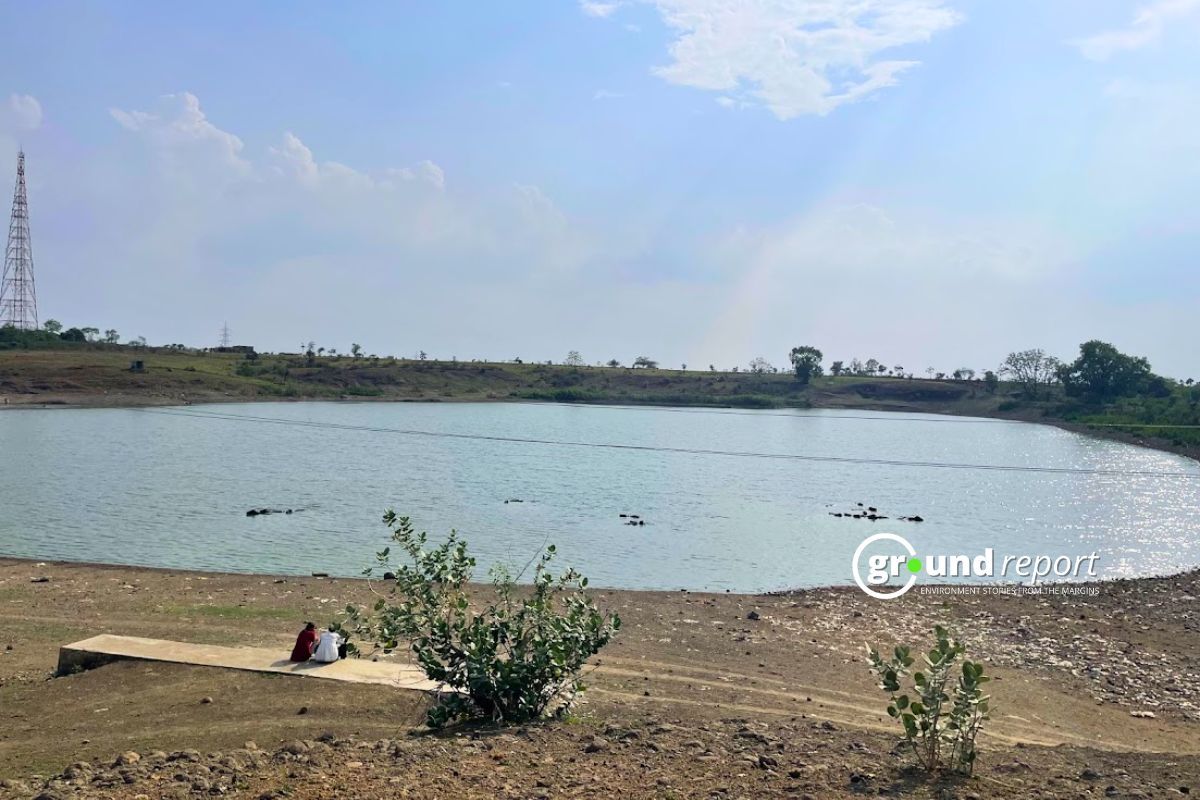
Rajesh Patel, son of Sarpanch Manohar Patel, credits the success of the initiative(s) to the villagers, with some anomalies. Rajesh says, “There are many in our village ready to make Shramdaan–voluntary labour contribution– when needed.” Through this shramdaan, he mentions, the villagers did the maintenance work– deepening the pond– and clearing the water channels, of the second pond before the monsoon.
The village sarpanch says that
“If the Panchayat had to get this work done, we would have incurred a cost of 5 lakhs. The money was saved, and the dug soil from the pond is being used in the field by the farmers, to make their fields more fertile… it is a win-win.”
However, despite two ponds, and two overhead water tanks of 90,000 litres and 18,000 litres the water problem is critical in the village during summer. In the months of May-June– even July– regular tap water is available once in three to four days. In the overhead tanks, water is filled from eight government borewells and then supplied to the villagers. But, during summer it is not enough. As Mohan Lal Panchal says that the water is filled through Sarpanch’s personal borewells to ensure sufficient water supply.
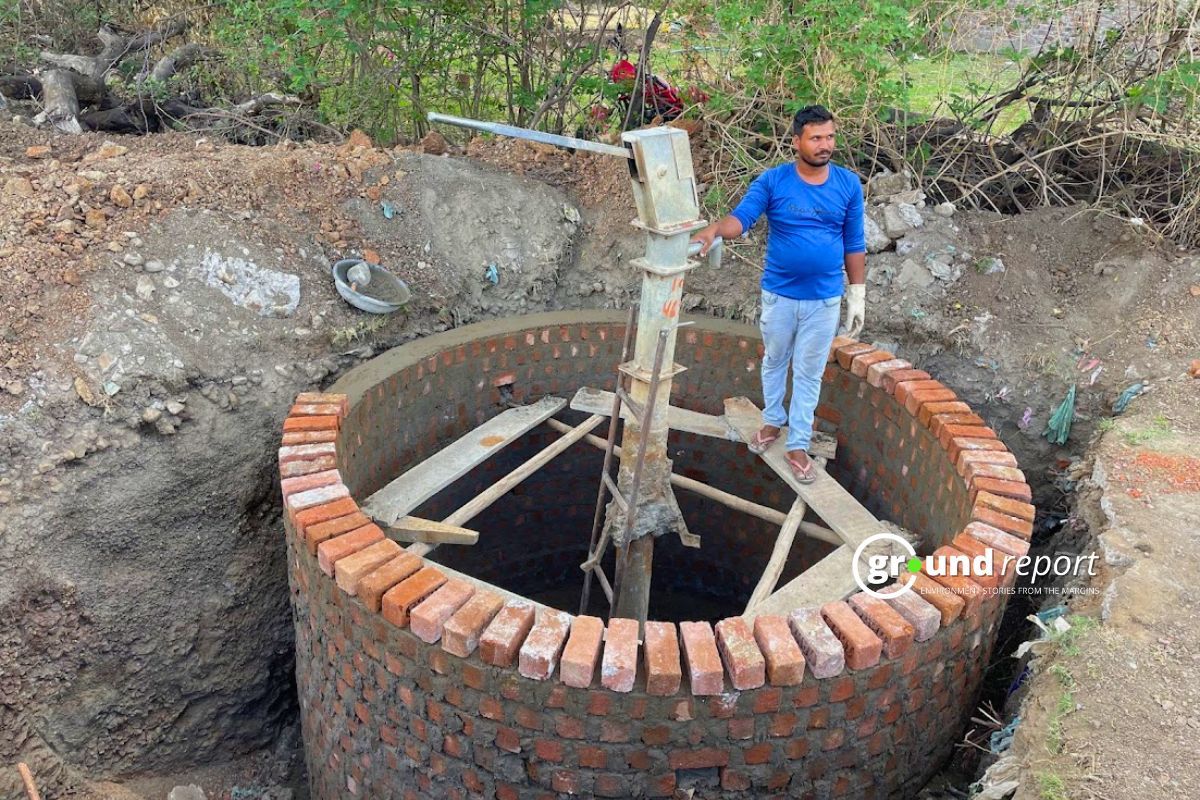
To catch rainwater, rainwater harvesting system(s) have been installed in some houses and panchayat buildings. Furthermore, water shafts are being constructed around the handpumps to recharge the groundwater level. They aren’t sure if these solutions would yield results. However, Sarpanch Mohan Patel says,
“Narmada water line will supply regular water to the villagers, soon… the work is under process.”
Another village in the Sehore district, Chanderi, struggles with the water crisis. They await PHE’s water tanker to provide water to households. With growing heat, the shortage of water is an expected reality. Quite like cities, there is rapid concretization in villages too. Excessive rainfall tends to flow out of the village, instead of recharging the groundwater. In such a situation, there is a need to adopt long-term and environmentally friendly thinking while developing our villages.
Plantation
The panchayat has a great emphasis on plantation. From cremation ground to panchayat, and a higher-secondary school, all are the sites of plantation with dedicated ‘paudha rakshak (plant protector). For the plantation around the Gram Panchayat building, the credit goes to pump operator Mohan Lal.

Apart from this, the panchayat plans to have almost 200 more plants in the area around the playground of the village’s higher-secondary school. They have already started planting the saplings, and plants. On this Rajesh Patel says,
“Quite like the cremation ground, the land here is rocky. We have to nurture the saplings and plants better to ensure that they grow into trees.”
Makhanlal dearly enjoys his work. With two buckets, full of water, dwindling from his hands, he is watering the plants. He says this work is better than digging as part of MNERGA. He stresses the importance of plants and the ecosystem which flourishes because of it.
The Other Side: Waste Management, solar energy, and optical fibre
In Khadi village, garbage isn’t littered anywhere except the common waste collection point(s). However, the waste segregation is almost negligible, and some semi-burnt, mostly plastic, waste is easily visible. The village officials accept their limitations in managing the local solid waste. Rajesh Patel mentions the limitation of funds, and technology to manage the waste. He adds panchayat’s battery-operated vehicle collects garbage, from each household. However, when we visited the battery of the vehicle had gone for repair. Hence, the vehicle wasn’t in use.
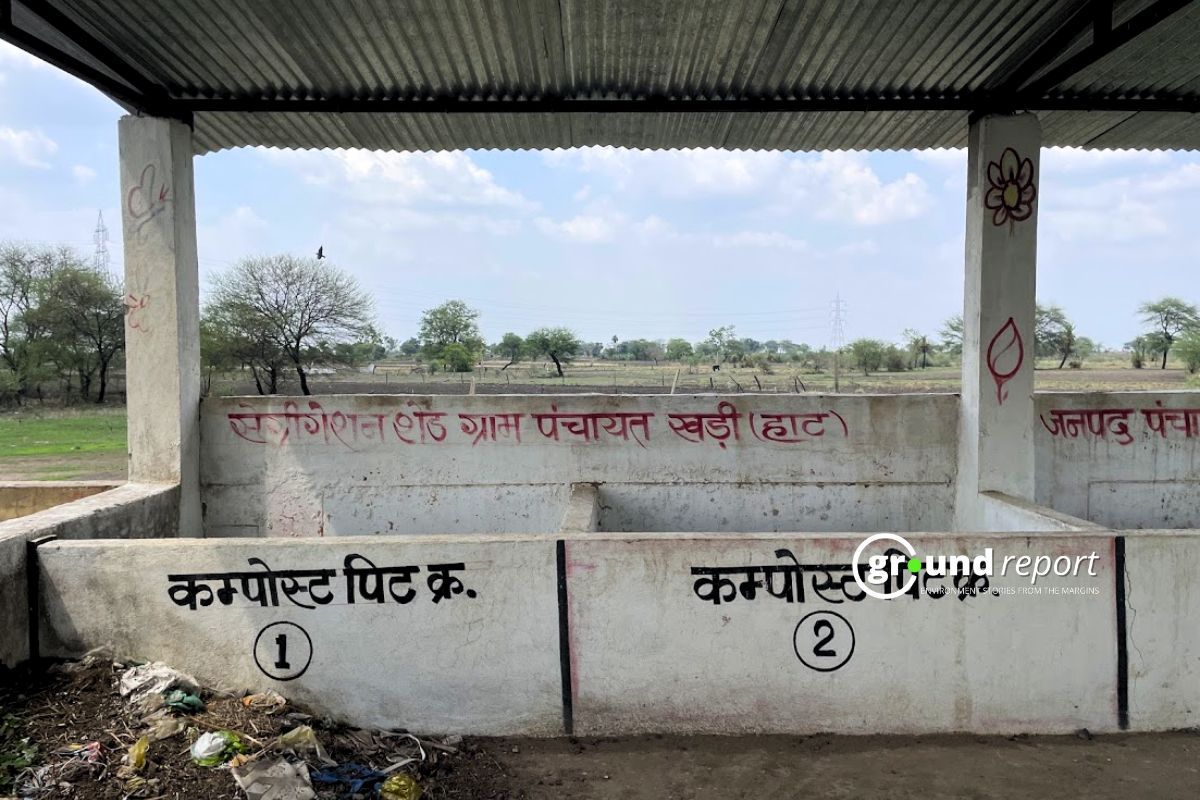
The panchayat had taken cognizance of the waste management issue and recently built a shed in the corner of the cremation ground for the same. In another addition, as per a regional Janpath official, they plan to build a fountain for the beautification of the village. ‘The village should be clean, and it should also ‘look’ clean, they add.
Apart from this, Mohan shows us the office, meeting hall and guest room built in the Panchayat Bhawan. Then our eyes fall on the optical fiber installed here. Mohan says that it has not been in use for almost 4 years. Not-in-use optical fibre is part of the National Optical Fiber Network (NOFN) was launched in October 2011 and in 2015 its name was changed to BharatNet Project. Its objective was to connect all the Gram Panchayats with high-speed internet.
According to Janpad CO Amit Vyas, Gram Panchayats can take advantage of this by purchasing a monthly plan. So far, only Mehatwada Panchayat has started it in Ashta Block.
The Panchayat office utilises energy from conventional energy sources; solar energy installation is yet to reach the village. When asked about this, Amit Vyas says that we are planning solar rooftops for Panchayat buildings and will inspire people to become self-reliant in terms of energy by taking advantage of the government subsidies.
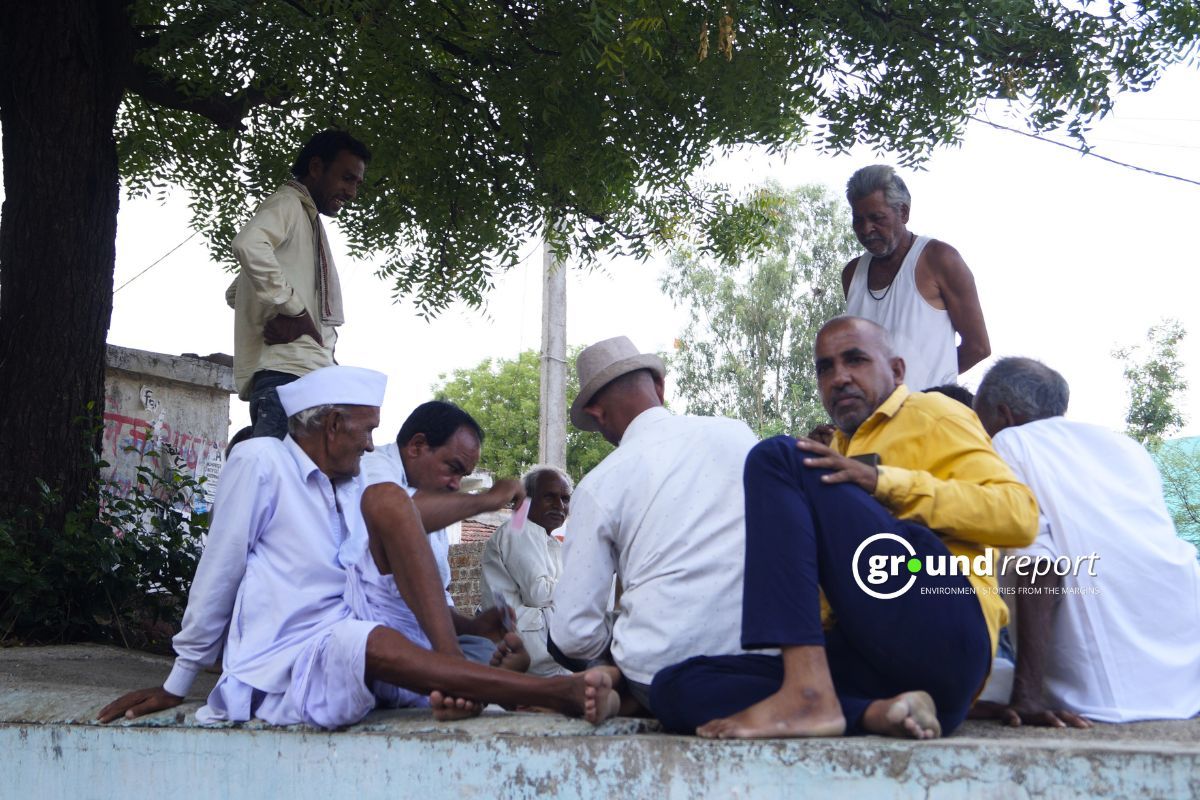
Model Village—Khadi Haat
We meet Dharmendra—resident of Khadi Haat—as we enter the road leading to the village from the state highway. We offered him a ride to the village. Interestingly, this DEWATS is a recent addition to the development work in the village. Several other initiatives are making a difference. To this Dharmendra says,
“The sarpanch of our village is very active. You will not find garbage or waste in our village. Almost every house has a water pipeline and, [recently] the government school has also been upgraded to a higher secondary level.”
However, Dharmendra lives in Bhopal with his wife and children for better employment opportunities. However, he often visits the village to meet his mother and brother still living in the village.
Mohan Lal Panchal—pump operator at the gram panchayat—in the panchayat office proudly exclaims,
“We often host several prominent government officials… this is room [in the panchayat office] where they stay.”
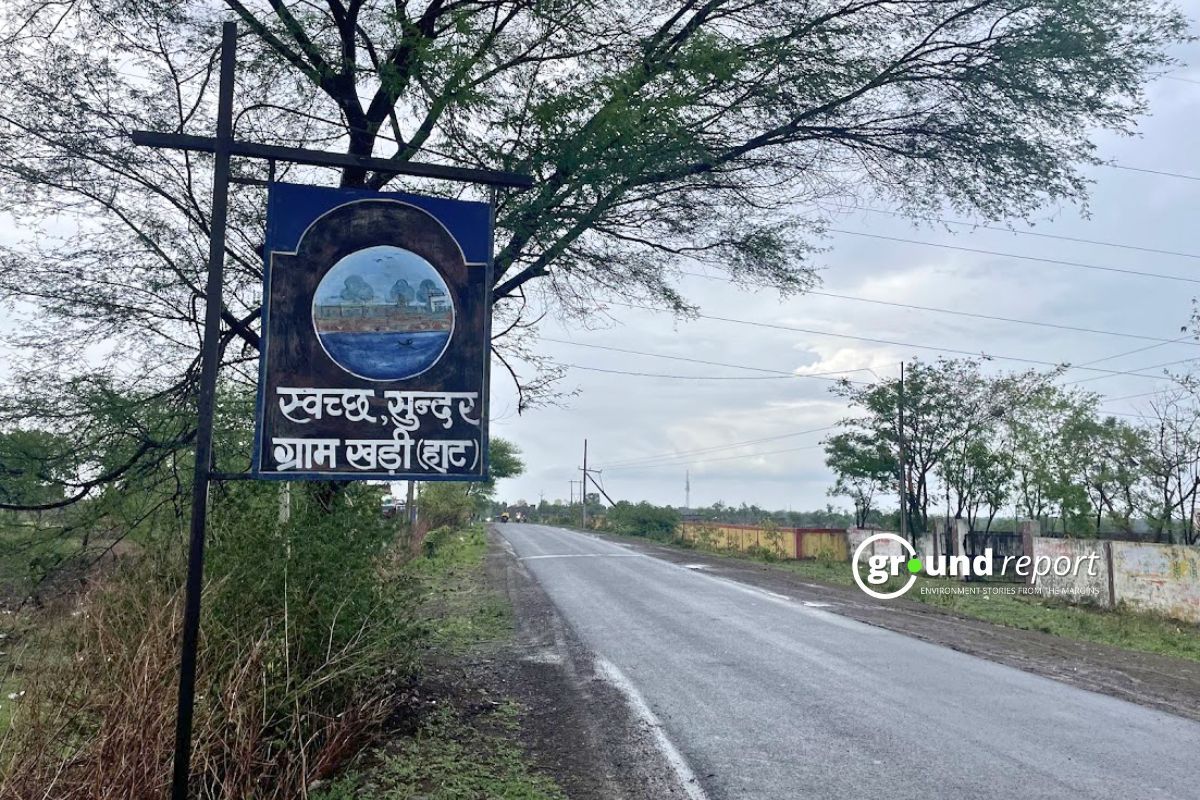
We tried to know the reason behind Khadi Haat’s exemplary work, compared to other panchayats from Ashta Block CO Amit Kumar Vyas. He said that all panchayats get funds according to their population. If any panchayat is doing better work, then the credit for this goes to the willpower of the Sarpanch and the support received from the people. Amit says,
“People in Khadi are aware and public participation is good here. People also pay taxes regularly here, and hence a lot of work can be done through that fund. And, seeing this the administration also actively supports them.”
Vyas adds that he makes the Sarpanch of other panchayats visit Khadi Panchayat for inspiration and get work done in their villages too.
Apart from this, another reason is political stability. Manohar Patel and his affiliates have been in the panchayat for at least five terms now. In the Ashta Janpath office, a sarpanch from the nearby village says, ‘There is so much politics in my village… that’s why we can’t be like Khadi Haat.’
Support us to keep independent environmental journalism alive in India.
Keep Reading
Pesticides and agriculture threaten Sarus Cranes at Indore’s Yashwant Sagar wetland
“Will give our lives, not our land”: Farmers oppose the ethane cracker plant in Sehore.
Tank under construction, dam under repair, & Chanderi Village struggles for water?
Stay connected with Ground Report for underreported environmental stories.
Follow us on X, Instagram, and Facebook; share your thoughts at greport2018@gmail.com; subscribe to our weekly newsletter for deep dives from the margins; join our WhatsApp community for real-time updates; and catch our video reports on YouTube.
Your support amplifies voices too often overlooked—thank you for being part of the movement.



